Poll Of The Month: If all the minerals required for the modern technologies in your life had to be extracted from mines directly adjacent to where you live, would you still want the tech?
August, 2025's poll in the Mirrors For The Mind, Heart and Soul series
We have all been told a story about the glorious accent from “primitive” “hunter-gatherers” to “civilized” city building people in various ways, but few of us ever stop to really think about and look into where all the materials come from that make this modern way of life possible to begin with.
Well, as I noted in March 2025’s poll of the month, with the lithium rush moving in to pillage what is left of the ancient forests of Ontario in the north I have had to embark on a crash course to learn about open pit mining and its many ecological/hydrological and human health impacts as we look at potential properties for a homestead and then look to see how close they are planning on carving lithium or cobalt mines into the earth nearby.
Here is the long and short of it for those not familiar with what modern day industrial mining looks like.
All modern industrial mining involves deforestation, draining lakes and rivers, blowing the land into pieces with explosives, carving deep gashes into the Earth with giant machines, using truckloads of industrial solvents like sulfuric acid (resulting in water contamination with toxic sludge) dragging that processed rubble to processing facilities with fleets of heavy machinery then processing the ore with extremely high energy furnaces using another slew of toxic chemicals (which further contaminate the water table, lakes, rivers and ocean elsewhere).
Open pit mining especially causes surface water contamination, it also destroys other water sources. So, it’s also responsible for the creation of toxic rain. The water cycle largely depends on the limited forests. The trees extract underground water and release it into the atmosphere for this process to continue. Therefore, open pit mining (as well as underground hard rock mining such as this) hinders the water cycle from providing adequate rainfall in the affected areas. The impacts are severe. The long term result will be increased regional droughts, biodiversity loss, poisoned fish, livestock, vegetables, fruit, soil erosion and the risk of desertification.
“All tools require materials and energy—they are built from something. A nuclear power plant, for instance, is made almost entirely from concrete and steel, which account for “over 95 percent” of the power plant’s “material energy inputs,” according to a University of California, Berkeley report. Concrete is made from aggregates— sand, gravel, crushed stone—and cement. Cement, in turn, is made from limestone, clay or shale, and gypsum. Steel is made from iron ore, alloying elements, and coking coal.
All of these substances are mined. It hardly matters which material we examine—the horrors are the same. The life stripped to bare rock, the rock hacked, bludgeoned, or bombed into cavernous pits, the pits engulfing sweeps of land that will not recover until the next ice age recedes. Surrounding the devastation is always more: the leach ponds, the toxic tailings, the acid rain, the ulcerated fish, the fine particulates shredding lung tissue with every breath. In the eight centuries of its rule, the Roman Empire covered Greenland in 800 tons of copper and 400 tons of lead from its mines.
Try to imagine the scale: windborne dust from 4,000 miles away, captured in the crystals of snowflakes, one by one by one, accreting to 800 tons. Victims of Rome’s industrial pollution may have numbered in the millions across Europe and the Middle East. The health impacts, then as now, are ghastly: convulsions, vomiting, diarrhea, anemia, stunted fetal growth, mental retardation, and cancer.
The seasonal river valley Wadi Faynan, in modern-day Jordan, is the site of an ancient Roman copper mine. Two thousand years has not been enough time to heal the damage from the mine. To this day, “the growth of the plants is stunted and their reproductive systems severely damaged.” The sheep there still have disturbing concentrations of copper in their feces, urine, and milk. Goats from the area are in high demand because they have no parasites, “but this is almost certainly because their guts are poisonous.” A deathly monument of slag still rises 30 meters high.
These things happen in a half-mythical “somewhere else,” unless you live there, in which case it’s your water and air, your lungs and skin, your cancer, and your child’s asthma. Which is why mines are always fiercely opposed by the people condemned to endure them.”
-
, Lierre Keith and Jensen (from Bright Green Lies: How the Environmental Movement Lost Its Way and What We Can Do About It)
Thus, this month’s poll will endeavor to get us to take a look in the mirror regarding assessing where our priorities truly are.. do we covet the conveniences of modernity enough to live next door to a giant toxic waste dump that would poison our water, air and soil?
Before I open the poll for voting, lets explore some of the facts about mining so we are answering the poll with a clear head.
Firstly, many modern mining operations claim to be following “environmental guidelines” and “minimizing the ecological damage”, however, when you take an honest look at the mines themselves, who owns them and who gets impacted by the degraded land, water and air around the mines, you will invariably find that the mine owners and shareholders do not live anywhere near that mess.
I will offer one example of a large Iron mine in the traditional territory of one of the Indigenous peoples of Europe below so you can see what I mean. (about 1/3 of the way down the article linked below is the part pertaining to Iron mining).
Indigenous European Land Defenders resist "Green Colonialism" and geoengineering over their ancestral lands
The Sámi people are the Indigenous people of the northern part of the Scandinavian Peninsula and large parts of the Kola Peninsula and they live in what is now modern day Sweden, Norway, Finland and Russia.
So Iron is in pretty much everything in our modern lives these days. It is central to all the “renewable” tech we are told is so much more “sustainable” than oil based tech and the biggest iron mines on Earth are pretty much aptly described in this image and post put together by my friend
(image above from post linked below)
“The most critical ingredient in wind turbines is steel. According to the World Steel Association, the trade group that represents most of the world’s large steel companies, “every part of a wind turbine depends on iron and steel.” And it’s not just essential for the turbines themselves, either. Steel is required for other phases in the generation of wind power, from the mining machines that extract the ore that will become the steel in wind turbines to the massive ships carrying turbine components around the world to the cranes that lift and install these turbines.
And it’s not just critical to wind power, either. Steel is one of the most important global commodities, essential to many parts of industrial civilization. Buildings, ships, cars and trucks, appliances, infrastructure, machinery, and weapons all require abundant, cheap steel.
Steel is made of iron alloyed with a smaller portion of at least one other element, most often carbon but sometimes manganese, chromium, nickel, or tungsten. About 2 billion tons of steel was produced in 2018, with more than half coming from China. Other major producers include Japan, Germany, Russia, the United States, and Brazil.
Mark Jacobson’s plan [to transition global energy usage to 100 percent "renewable", which would require building 3.8 million wind turbines by 2030], revered by so many mainstream environmentalists, would require about 120 percent of the steel produced in 2018 across the entire world.
Increased mining: that can’t be the plan that’s going to save the earth, can it? That’s just more of the same plan that’s already killing the earth.” -
, Lierre Keith and Derrick Jensen (from Bright Green Lies: How the Environmental Movement Lost Its Way and What We Can Do About It)
Now the devastation caused by mining for materials to make steel is not limited to the north of Europe. One of the largest Iron mines on the planet is right in the middle of the Amazonian Rainforest (or what is left of it).
This is what the region where they are mining in the Amazon looks like before mining:
and
These pics show what it looks like after mining:
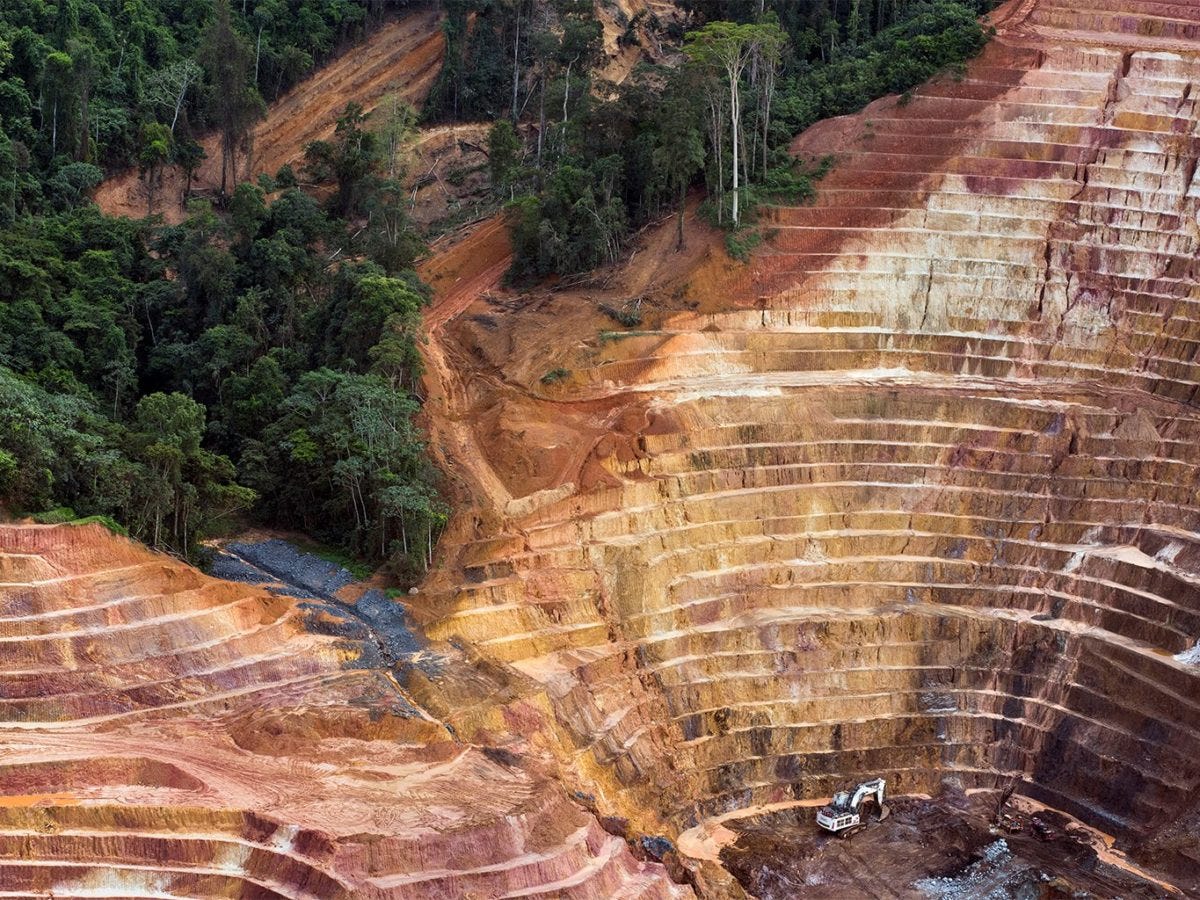
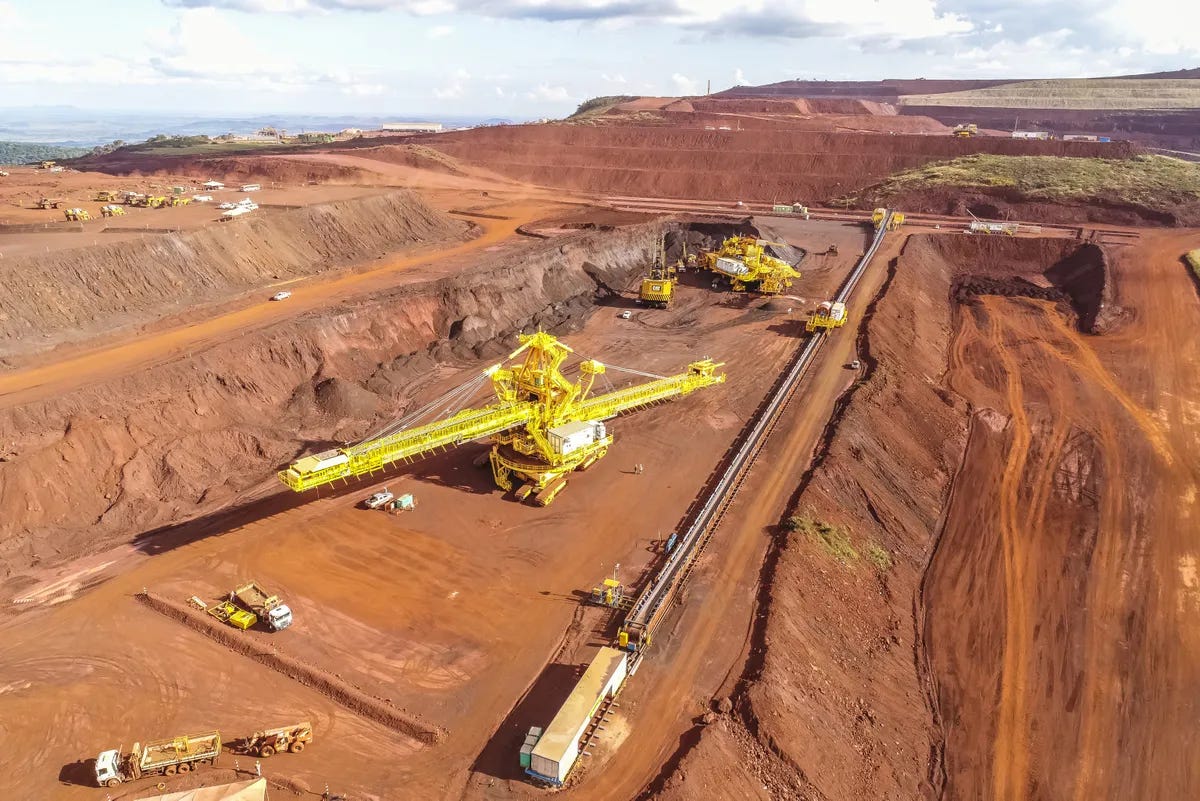
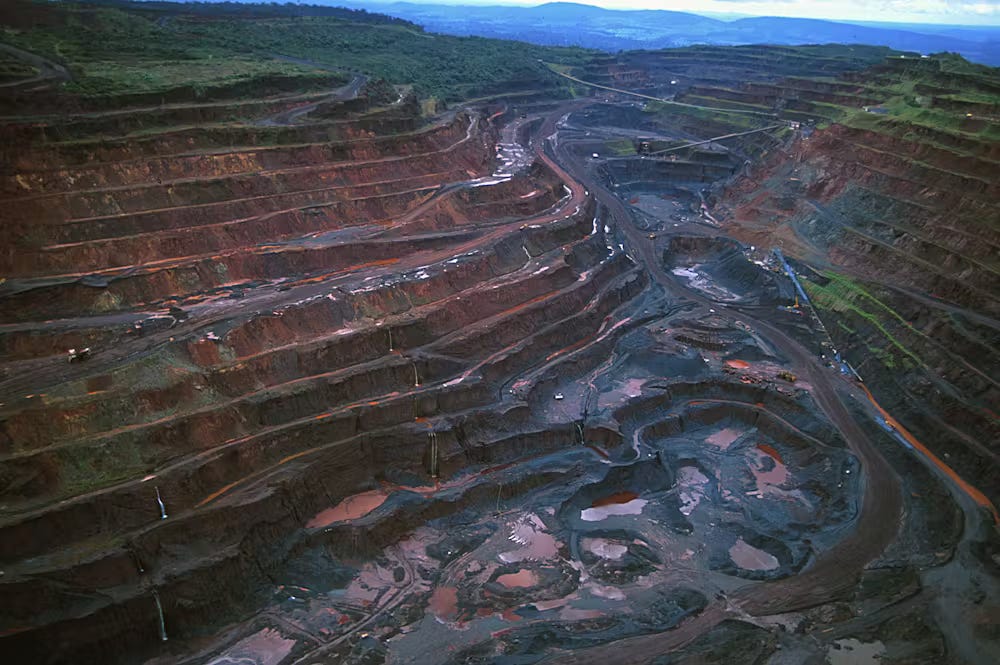
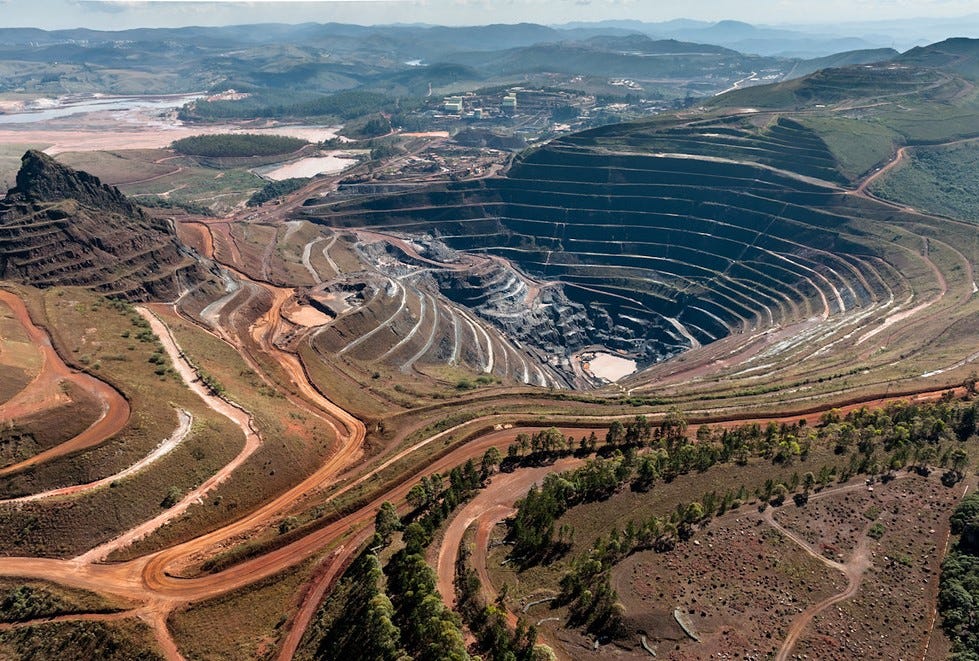
Here’s another excerpt from Chapter 5 of Bright Green Lies:
According to the World Steel Association, the trade group that represents most of the world’s large steel companies, “every part of a wind turbine depends on iron and steel.” And it’s not just essential for the turbines themselves, either. Steel is required for other phases in the generation of wind power, from the mining machines that extract the ore that will become the steel in wind turbines to the massive ships carrying turbine components around the world to the cranes that lift and install these turbines.
… Steel is one of the most important global commodities, essential to many parts of industrial civilization. Buildings, ships, cars and trucks, appliances, infrastructure, machinery, and weapons all require abundant, cheap steel…
Iron ore is the main raw precursor to steel and is mined around the world. Five of the 10 largest iron ore mines are in Brazil. Because iron ore mining is big business, worth hundreds of billions of dollars annually just in Brazil, the government does all it can to streamline mining permits, sidestep environmental regulations, and mute community opposition.
The world’s largest iron-ore mine is the Carajás mine, located in the Amazon rainforest in Brazil. More accurately, the mine is located in what used to be the Amazon rainforest. Now, it’s located in the center of a wasteland, a clearcut, an industrial chasm. Every year, more than 2,400 square miles of forest around Carajás are cut down, mostly to make charcoal used for smelting iron ore. Yes, you read that number correctly. And yes, that’s annually. The latest $17 billion mine expansion project has already destroyed mile after mile of rainforest, and threatens a unique part of the Amazon, a savanna around two lakes, home to more than 40 endemic plant species found nowhere else on earth.
Toxic “tailings” sludge from these mining operations is impounded behind huge earthen dams, two of which have failed in recent years. A 2015 collapse near Mariana, Brazil destroyed two villages, killed 19 people, polluted water supplies for 400,000, and released more than 43 million cubic meters of toxic waste into 400 miles of rivers of streams and the Atlantic Ocean. According to a United Nations report, “Entire fish populations—at least 11 tons— were killed immediately when the slurry buried them or clogged their gills.” The same report describes that “the force of the mud- flow destroyed 1,469 hectares (3,630 acres) of riparian forest.”
The report uses the term “eliminating all aquatic life” to describe what has happened to more than 400 miles of river. The Mariana tailings dam failure has been called the worst environmental disaster in Brazil’s history.
The second major failure at a Vale iron-ore mine hit Brumadinho, Brazil, in January 2019. This time, the mudflow killed 270 people and released 12 million cubic meters of toxic sludge—destroying all life in another river, the Paraopeba. In the aftermath, Vale safety inspectors “failed to guarantee the safety” of 18 other Vale dams and dikes in Brazil.21 As one researcher put it in the aftermath, “In Brazil and [the state of] Minas, it is the ore above everything and everyone.”
Iron ore mines in the Amazon basin have displaced tens of thousands of indigenous people, decimated newly contacted tribes through the spread of infectious diseases, and flooded remote areas with thousands of workers. A 2011 report from the International Federation for Human Rights attributes “incessant air pollution” to the iron ore mines. Forced labor and child slavery have been documented by the Brazilian government. Mines become the locus of networks of roads that cut into the jungle, leading to poaching and illegal logging in protected areas.
People in the region contend with cancers, birth defects, and lung diseases caused by pollution from processing facilities, factories, and constant traffic of industrial trucks and trains. In some towns, a fully loaded train passes every 20 minutes, day and night.
“[The town of Piquiá de Baixo is] a place where practically the whole population is likely to get health problems and lung diseases,” says local teacher Joselma Alves de Oliveira.
Resistance has been widespread, with tribal people, students, and forest lovers blockading railways and holding public protests, but with little success. Local business elites and politicians, many of whom have been powerful since the days of Brazil’s military dictatorship, protect the mining operations with the help of police and paramilitary forces.
“In thirty years, iron exploitation [has left] deforested areas, slave labor, migration, and has torn apart the identification of the communities with their territories,” says community organizer Padre Dario Bossi, who has been fighting iron ore mines for decades. “It has also left land conflicts, pollution, urban disorganization, and violence due to the intense exodus of people in search of work, the most affected being indigenous or African.” -
(Source)
In some places if you stand up against the mining or clear cutting operations you get death squads sent your way .. (for more on that read post below)
In the States and “Canada” they want to pillage the land to get at lithium, copper and silica for the governments growing AI Data farms as they construct their Algocracy.
If you’re not convinced, read this excerpt from Bright Green Lies:
About 800 million tons of silicon is mined each year to create high-purity, metallurgical silicon. This quantity is growing. According to the Minor Metals Trade Association, “The biggest shift in recent years [in the metallurgical silicon market] has been the growth in the use of silicon for use in solar panels, mainly via the production of polycrystalline (or multi-crystalline) silicon (polysilicon).... Continued strong growth in silicon use in PV is expected to lead to market growth ... in excess of 10 percent [per year].”
Refining silicon dioxide into metallurgical-grade silicon requires heating the crushed raw ore to about 4000°F in an electric arc furnace. Carbon, often in the form of coal or coke, is added and bonds with the oxygen to create carbon monoxide. This reaction, which of course leaves behind slag, produces 99.6 percent pure silicon. But still more purity is needed for solar cells.
The second refining step involves heating the material inside a steel furnace insulated with thick layers of graphite until the silicon is molten, around 2500°F. Hydrochloric acid and copper are added to the mixture, and they react with the silicon to produce trichlorosilane gas. Boron or phosphorus is introduced to the furnace to help make the silicon conductive. Finally, a “seed crystal” is inserted into the mixture and slowly withdrawn while spinning at a precise speed. This process, entirely controlled by computers, results in a single huge 99.99 percent pure silicon crystal in which all the atoms are aligned. During that process, about 80 percent of the original metallurgical silicon is lost as waste.
-
( source)
For many years I have told people who champion electric cars and solar panels that considering they also rely on finite resources, we should be careful that we do not end up going from trading blood for oil, to trading blood for lithium.
It appears that, sadly, that is exactly what we are doing now in South America, Australia and soon in northern Ontario/Quebec (and in the Cobalt Mines in the Congo, that are also required to make the batteries).
Over 50 percent of the world’s known lithium deposits are in the “Lithium Triangle”—the lithium concentrated brine sources in Argentina, Bolivia, and Chile. Bolivia’s high mountain deserts—the Salar de Uyuni—have by far the largest known reserves of lithium.
Evo Morales -- Bolivia's first indigenous president, had a commitment to the environment and to Pachamama (Mother Earth) and he was against inviting in transnational corporations (like Telsa and it's lithium mining partners) to pillage the land for lithium.
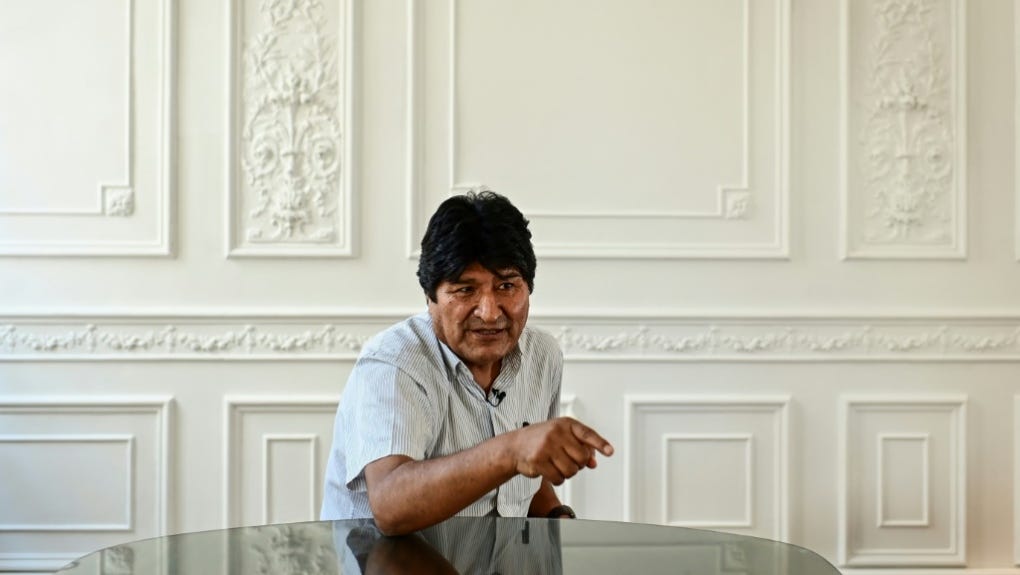
When he refused to allow multi-national corporations to pillage the Earth for the large lithium deposits in his country it was not long before a US-backed military coup took place.
President Evo Morales Ayma, was removed illegally from his office in November 2019. The Bolivian military, at the behest of Bolivian oligarchs with ties to Lithium Mining Corporations and the United States government, threatened Morales; Morales went into exile in Mexico and then in Argentina.
The CEO of the U.S.-based Telsa car manufacturer has admitted to involvement in what President Morales has referred to as a “Lithium Coup.”
“We will coup whoever we want! Deal with it.” was Elon Musk’s response to an accusation on twitter that the U.S. government organized a coup against President Evo Morales, so that Musk could obtain Bolivia’s lithium.
The coup was about Bolivian lithium; and not only did it involve violent coercion to remove Bolivia's first indigenous president from office, it also resulted in two massacres local people defending their land against the lithium mines (and now is resulting in the destruction of the land and ecosystems there).
Before:
After:
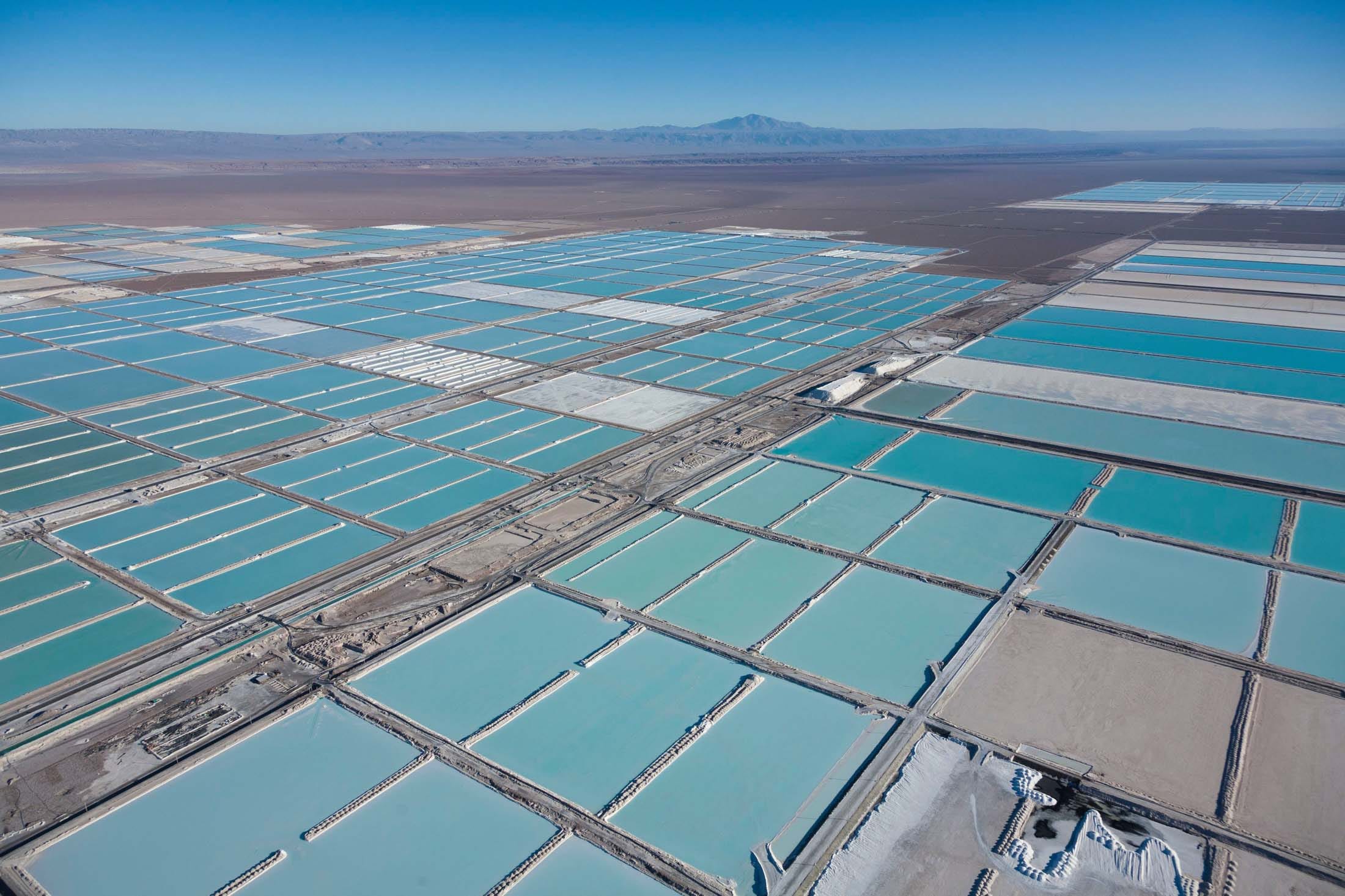
This is what "sustainable development", Greenwashing, "Green Colonialism" and trading blood for lithium looks like.
The corporate oligarchs that are ravenous to make billions from pillaging the Earth for lithium and cobalt now have their crosshairs set on Ontario and Quebec, God help anyone that dares to stand in their way to defend the Boreal Forest (which they intend to scalp, grind into rubble and poison so we can have ipads and EVs).
For more information on the Lithium Coup in Bolivia:
https://socialistproject.ca/2020/07/elon-musk-overthrow-of-democracy-in-bolivia/
https://mronline.org/2020/11/13/evo-morales-lithium-was-the-reason-for-the-coup-in-bolivia/
So, I could go on and offer you a dozen other examples of how not just ancient Roman mining, but also all modern day "sustainable” and so called “low impact” mining decimates the ecology, water and air in the places where it exists, but I think you get the picture.
Now the question before us is this, given that mining requires the decimation of land, water and air, would you be willing to make your own backyard the sacrifice zone in order to perpetuate the conveniences of modernity?
(FYI : I am not standing on any kind of “moral higher ground” when I pose this question to all of you. While I may have made the decision to not buy any new gadgets requiring lithium/cobalt since I learned about the true nature of the mining industry about 4 years ago, and I now only get re-furbished/used computers/phones, there are still a number of services I pay money for that most certainly feed into perpetuating the mining industry).
One of the purposes of this particular poll is to invite us all (myself included) to take an honest look at what it really costs to perpetuate this modern way of living and to take on honest look in the mirror to assess whether or not that cost aligns with our stated moral values.
Many of us would like to say that we value the wise teachings of that famous carpenter from a little town called Nazareth (who is sometimes mistaken for God) in that we see the inherent moral truth of “The Golden Rule”, yet, how can we claim to live by such a moral code when we are willing to throw other humans and non-humans under the proverbial bus so that we can have the modern technological conveniences we have become accustomed to?
If we are not willing to live next door to an open pit pine that poisons the water, air and makes our life a living hell, how can we morally outsource that cost onto others through our continued purchases of products that require those conditions being forced onto others in far away places?
Are we really willing to live by The Golden Rule, or are we only willing to live by that rule ostensibly when it is convenient ?
These are some of the questions I ponder as I think about how I want to live and the mark I want to leave on this world with my free will.
I would appreciate it if you could elaborate on your reason for voting for what ever option you chose in the comments section to promote constructive discussion.
Thank you in advance to those who are taking the time to vote and comment to promote constructive discussion and hold up a candle to the mirror.
Other pertinent articles and links:
For more info:
Indigenous Voices Rally Against Lithium Mining in Northwestern Ontario:
THE IMPACTS OF MINING ACTIVITIES ON WATER: https://miningwatch.ca/sites/default/files/2023-11_CitizensGuide_ImpactsOnWater_0.pdf
Galaxy Lithium's James Bay Project Would Cause Important Arsenic Contamination:
“The North is key to Canada’s critical mineral rush. Will its environment be protected this time?” :
https://thenarwhal.ca/canadian-north-critical-mineral-strategy/
Quebec government drags First Nation back to Court over landmark mining decision (dec 2024):
https://cqde.org/en/news/quebec-drags-first-nation-back-to-court-over-landmark-mining-decision/?
Quebec's 2024 Budget: An Arbitrary Half-Billion for Mining and Almost Nothing for the Environment:
Cree Elder Thomas Jolly :'If the water becomes contaminated by the mine, I don't see how we can limit the damage': https://www.cbc.ca/news/canada/north/quebec-lithium-division-1.6739010
In closing I will quote something from a friend’s post (linked below)
“What if the most important question we could ask isn’t “What can I get from the Earth?” but “What does the Earth ask of me?”
This isn’t a question born of sentimentality. It is a call to remember something older than civilization itself. It is a question that shatters the assumptions of industrial capitalism, where the Earth is rendered mute, broken into parts for profit, and named “resources.” To ask what the Earth asks of us is to recognize her as animate, as kin… not property. It is to acknowledge that we are not apart from the world, but participants in a vast, living web.
Robin Wall Kimmerer, botanist and member of the Citizen Potawatomi Nation, posed this question not as metaphor, but as moral imperative. What does the Earth ask of us? And how does She ask?
In this time of climate unraveling, sixth mass extinction, and cultural amnesia, it is a question that waits for each of us in the wind through the trees, in the silence of vanishing frogs, in the moss that carpets wounded ground. It is a question that confronts the dominant story of endless extraction. And it invites us to listen again… not just with our ears, but with our bodies, our memories, our responsibilities.
We have taken too much, for too long, without ever asking what we owe in return. Perhaps it’s time we remembered how to live as if our place in the world mattered. As if the Earth were not a warehouse, but a beloved elder.
From Resource to Relative
In the language of empire, the Earth is reduced to “natural resources.” Nothing but a stockpile of raw materials awaiting extraction. Forests are timber. Rivers are water rights. Mountains are mineral deposits. And so long as the world is seen this way, there will be pipelines through sacred ground, clearcuts where ancient groves once stood, and open wounds in the land where profits were pulled from the body of the Earth.
To live in gratitude is to be moved to give back. And this is the heart of Kimmerer’s teaching: reciprocity.
In Indigenous tradition, this principle is formalized in what she calls the Honorable Harvest:
Ask permission.
Take only what you need.
Never take the first or the last.
Give thanks.
Use all that you take.
Share.
Return the gift.
I see this Honorable Harvest not simply as a guide to ethical harvesting… but as a worldview. One that sees giving as inseparable from taking. One that recognizes that sustainability is not a technical problem, but a relational one.
We can practice reciprocity in countless ways. Tending a garden without poisons. Foraging with humility and care. Rewilding degraded land. Protecting rivers as if they were our children… because certainly they are.
When we give back, we don’t just restore ecosystems. We restore relationship. We re-enter the sacred contract of life.
The Earth does not ask us to save her. She asks us to remember her, to honor her, and to become again what we once were: a species among kin.'
Reciprocity also means refusal. It means saying no to systems that destroy the Earth. Every dollar spent is a vote. What are we voting for? Where we can… we reject foods grown with poisons. We refuse fast fashion that exploits people and pollutes rivers. We say no to fossil fuel expansion, to plastic wrapped in plastic, to tech that ravages the earth for rare metals.” -




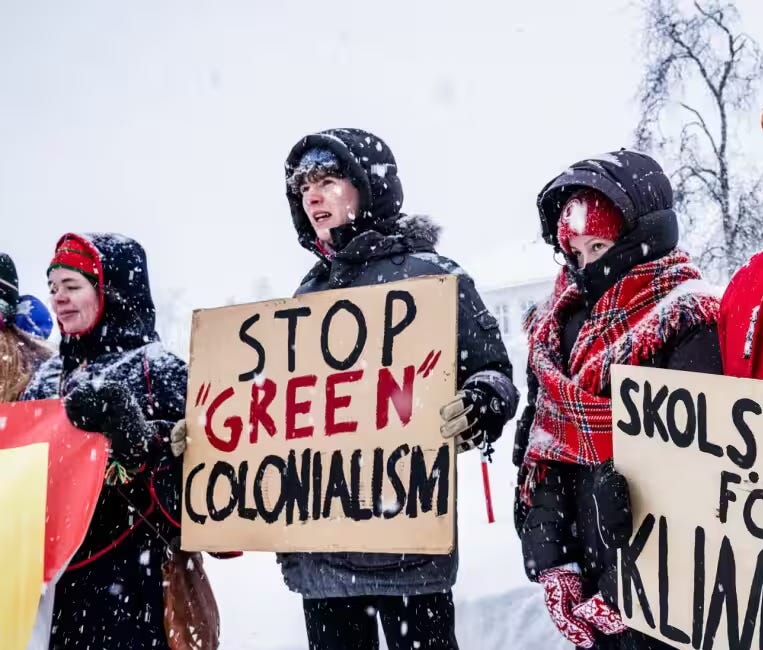
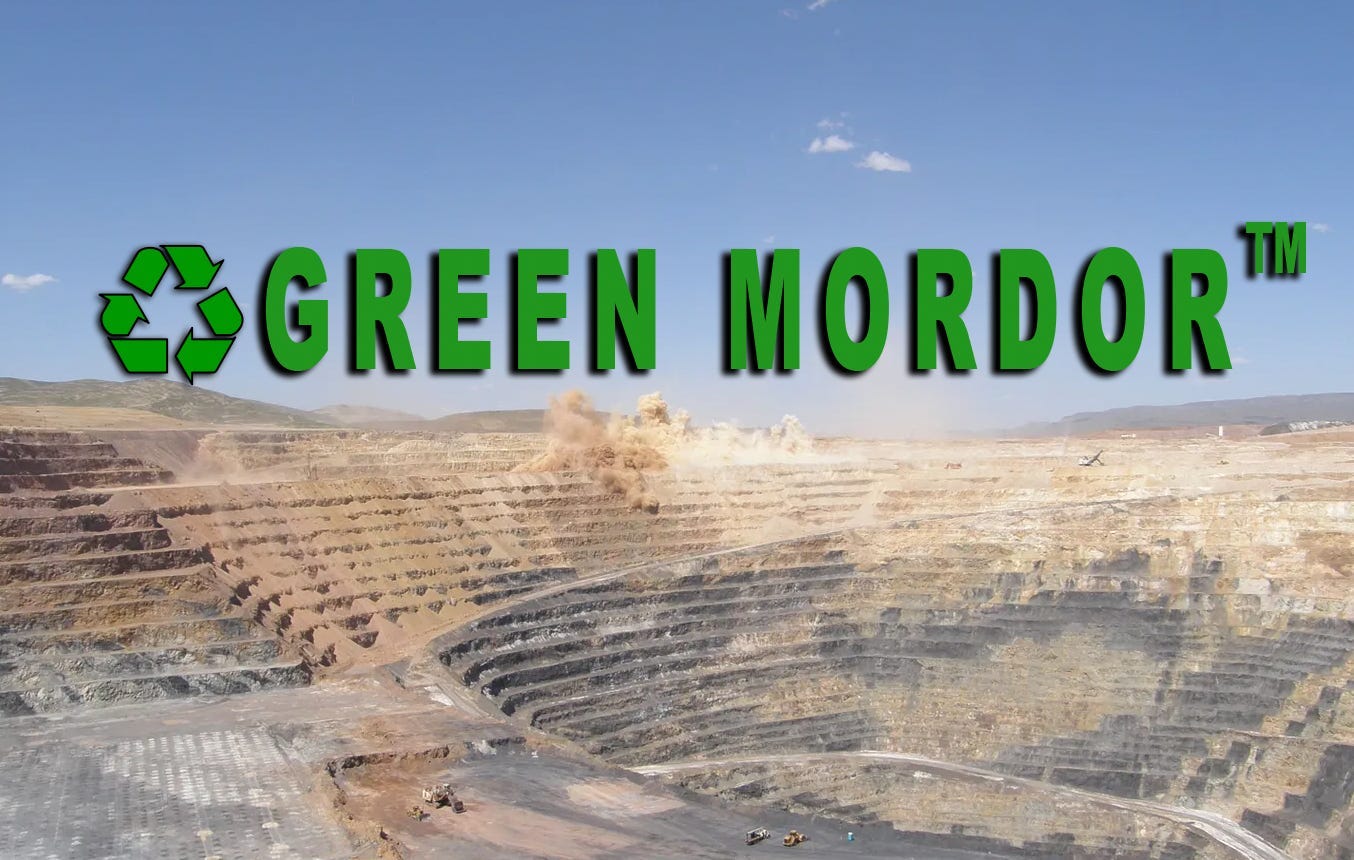

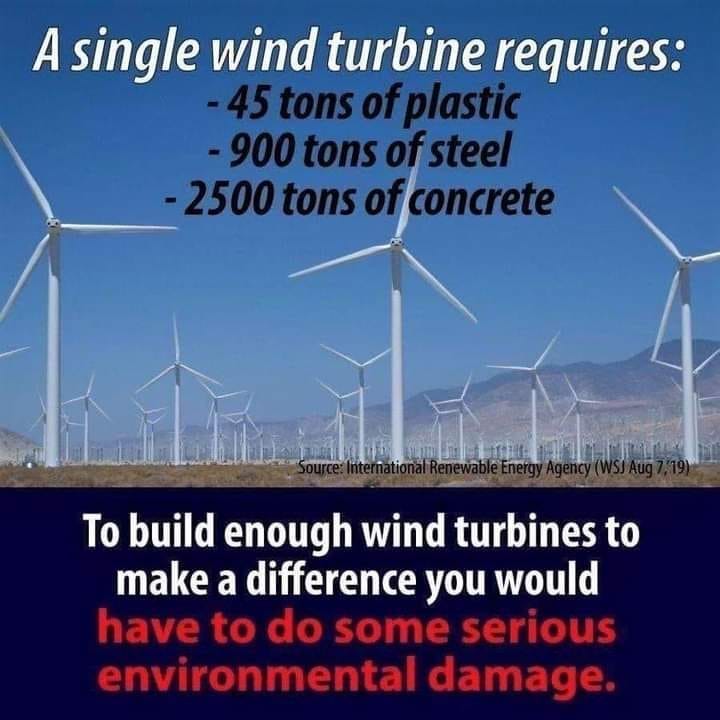
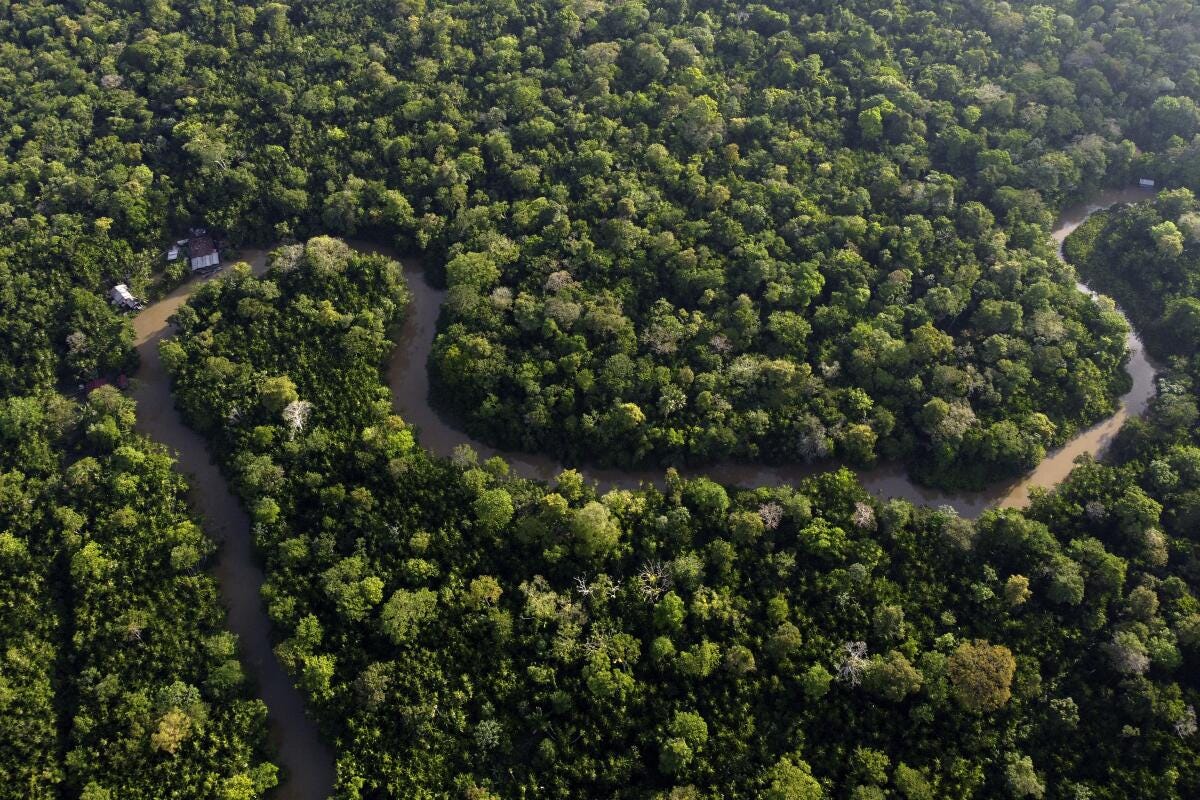
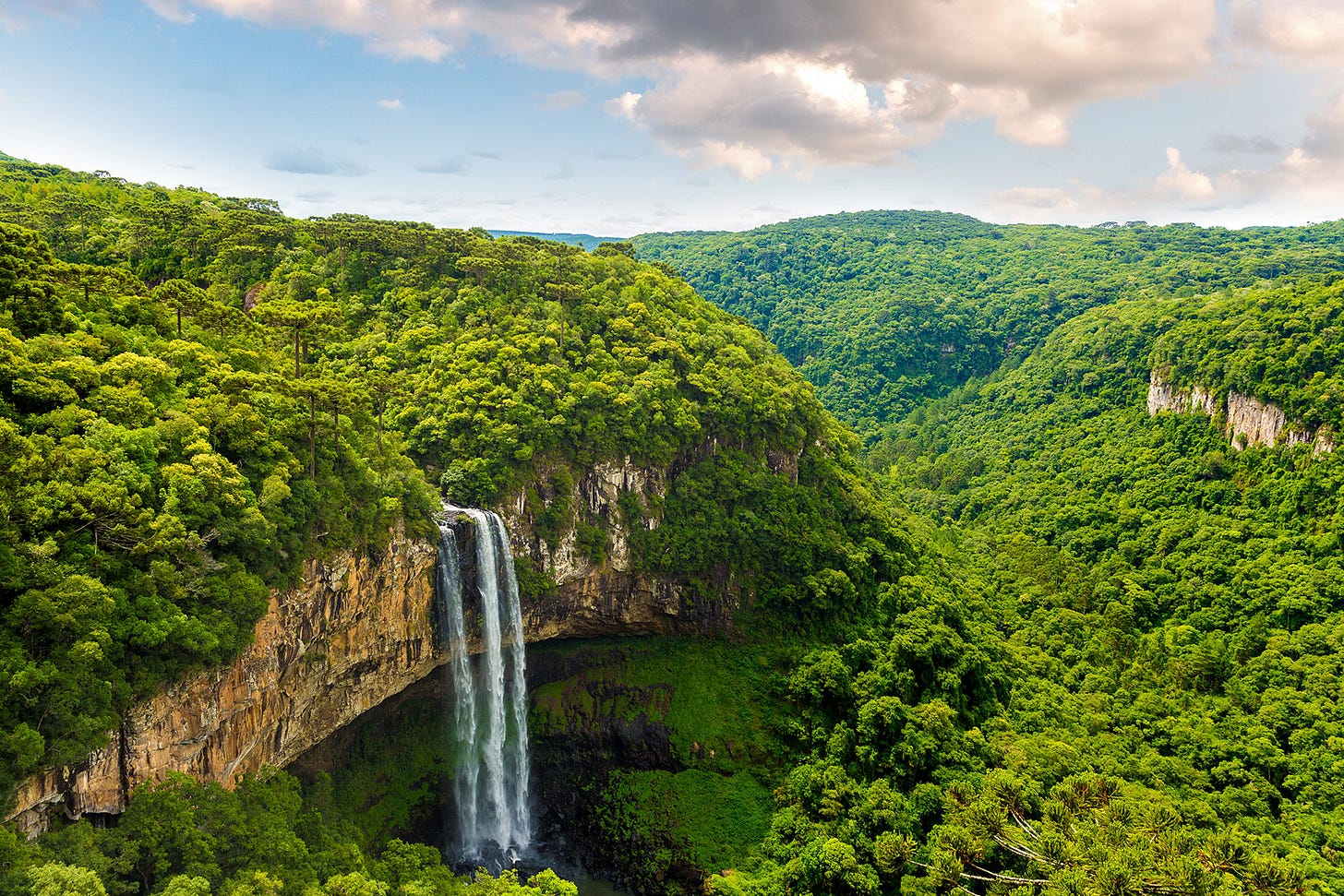


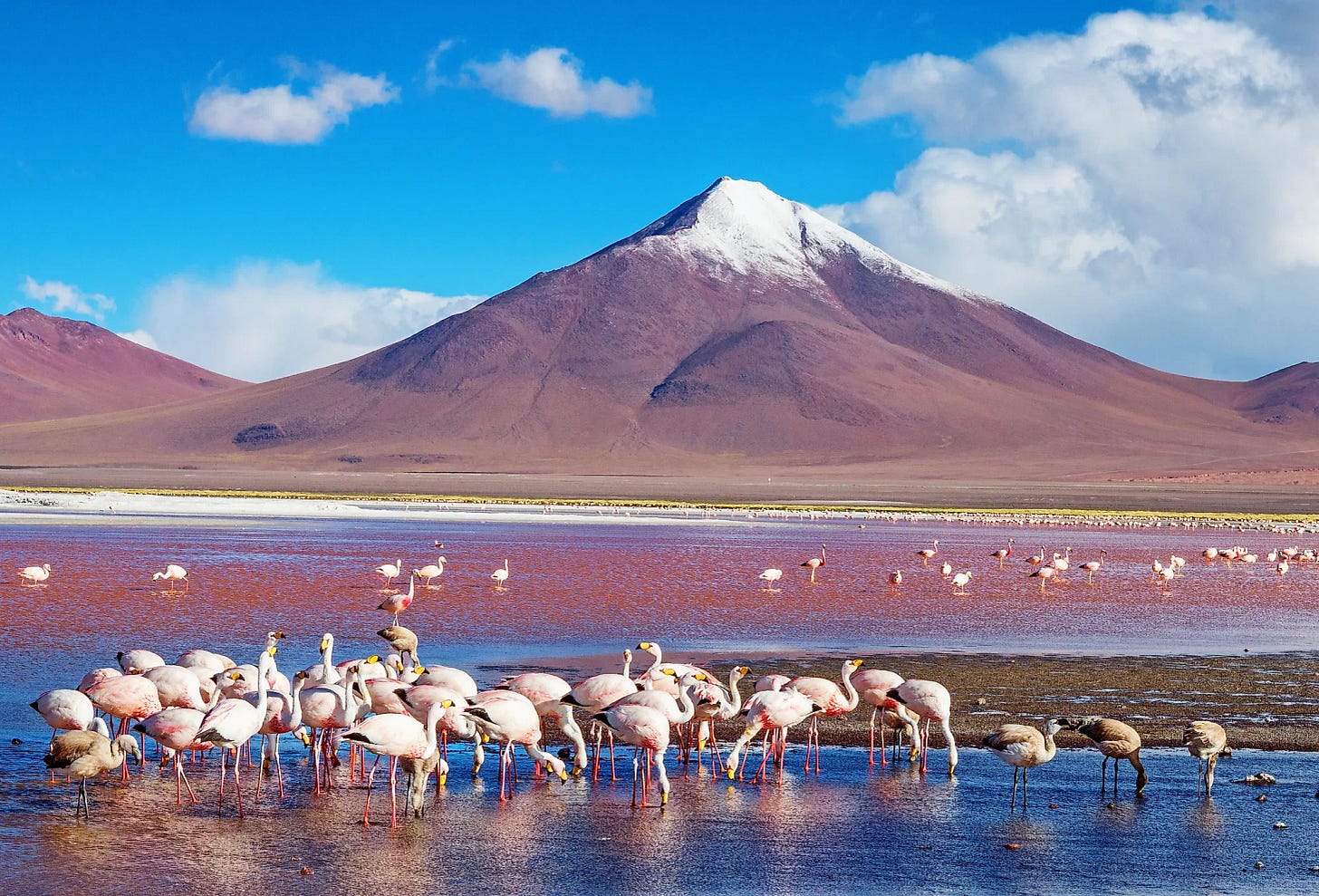
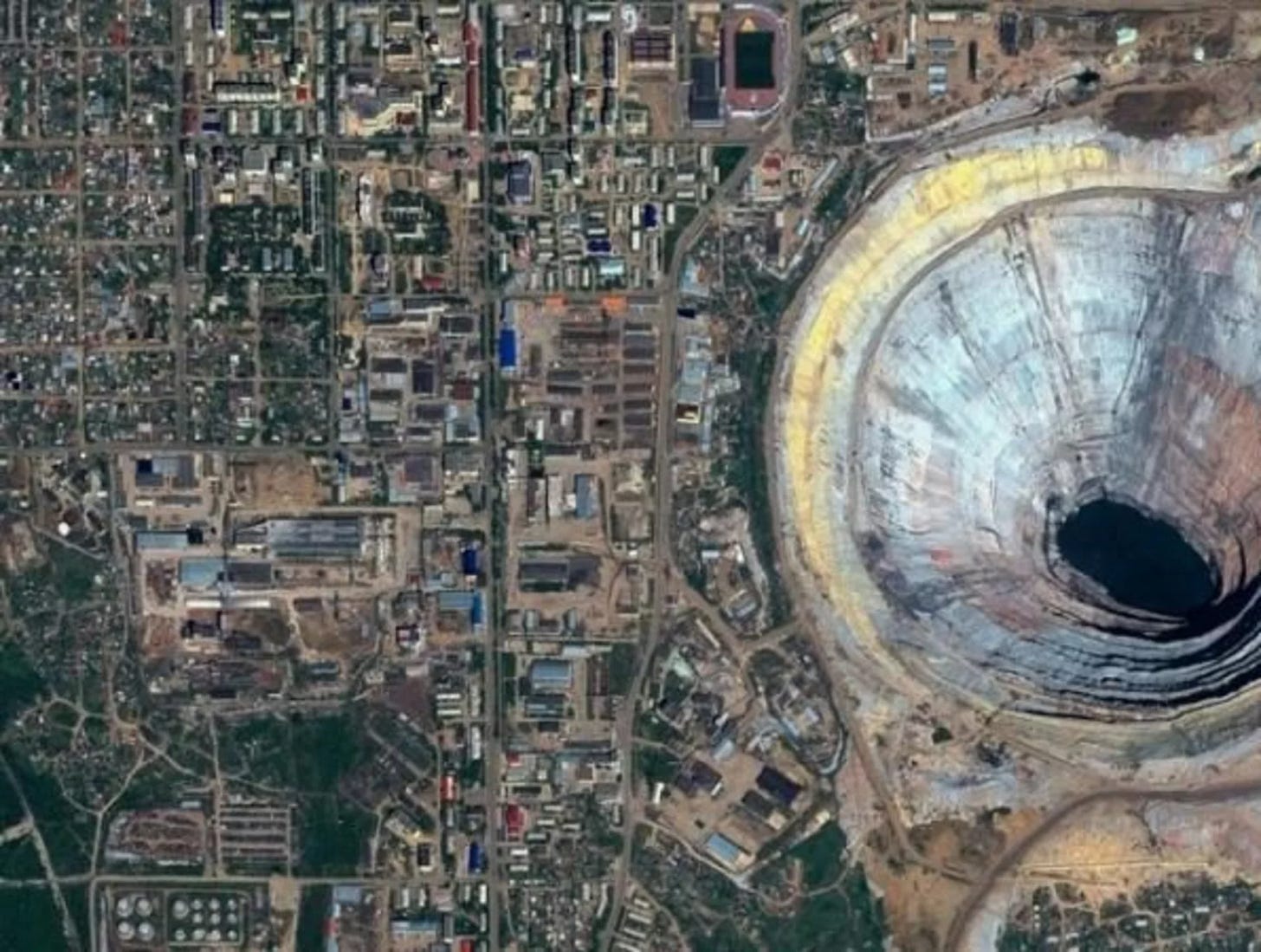
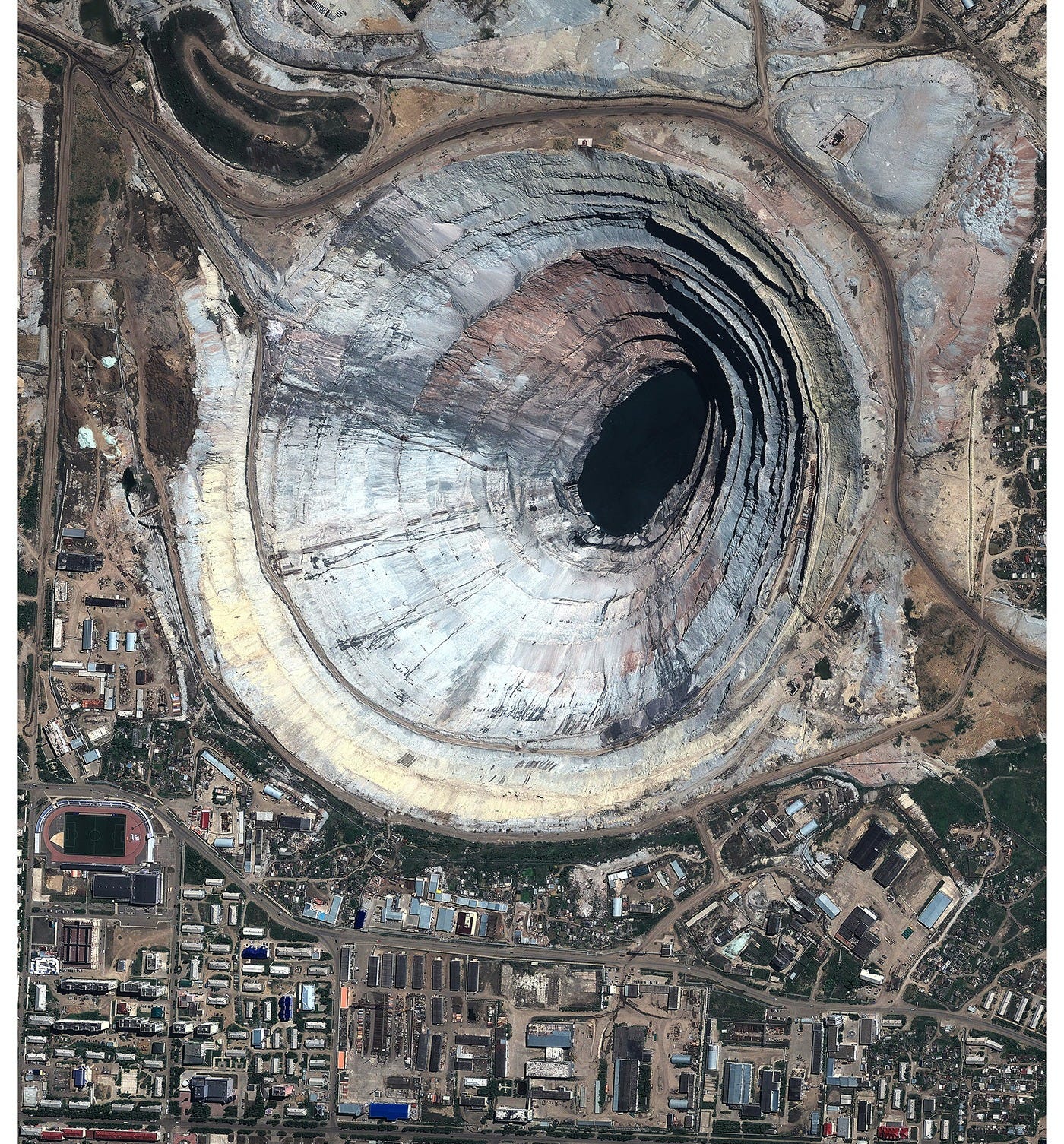
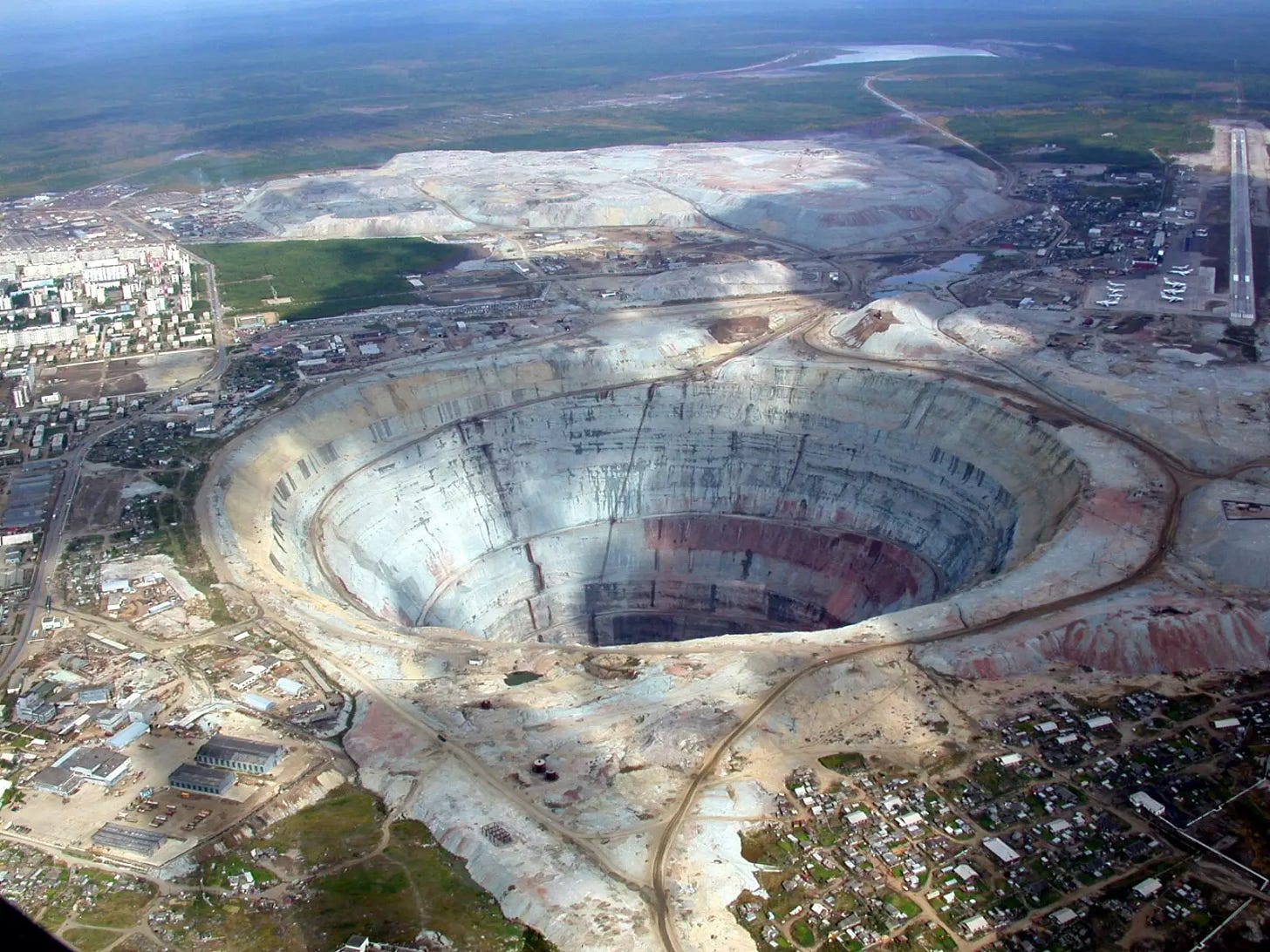
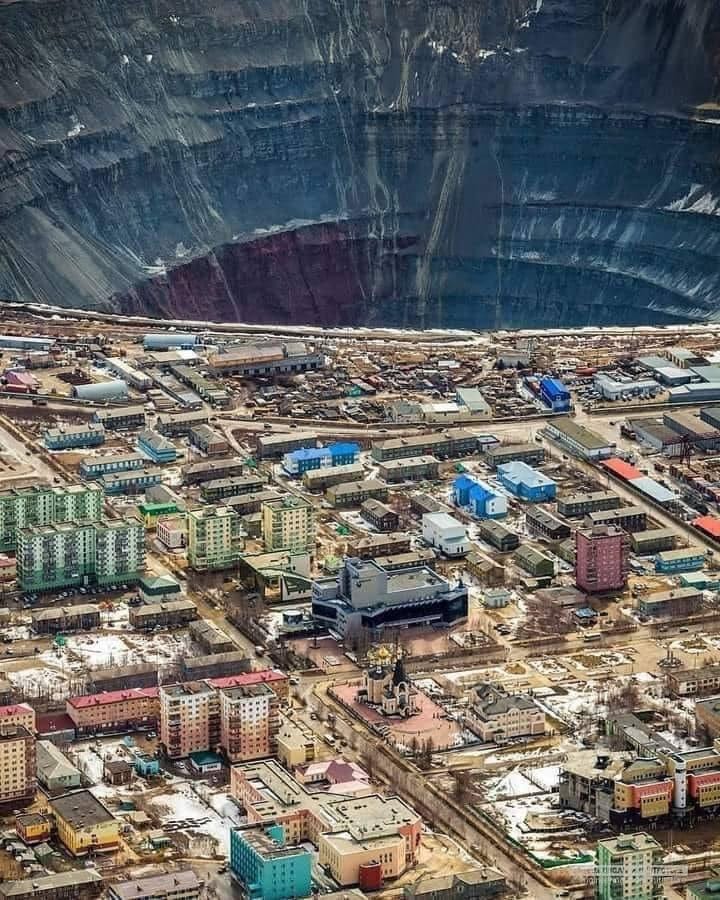
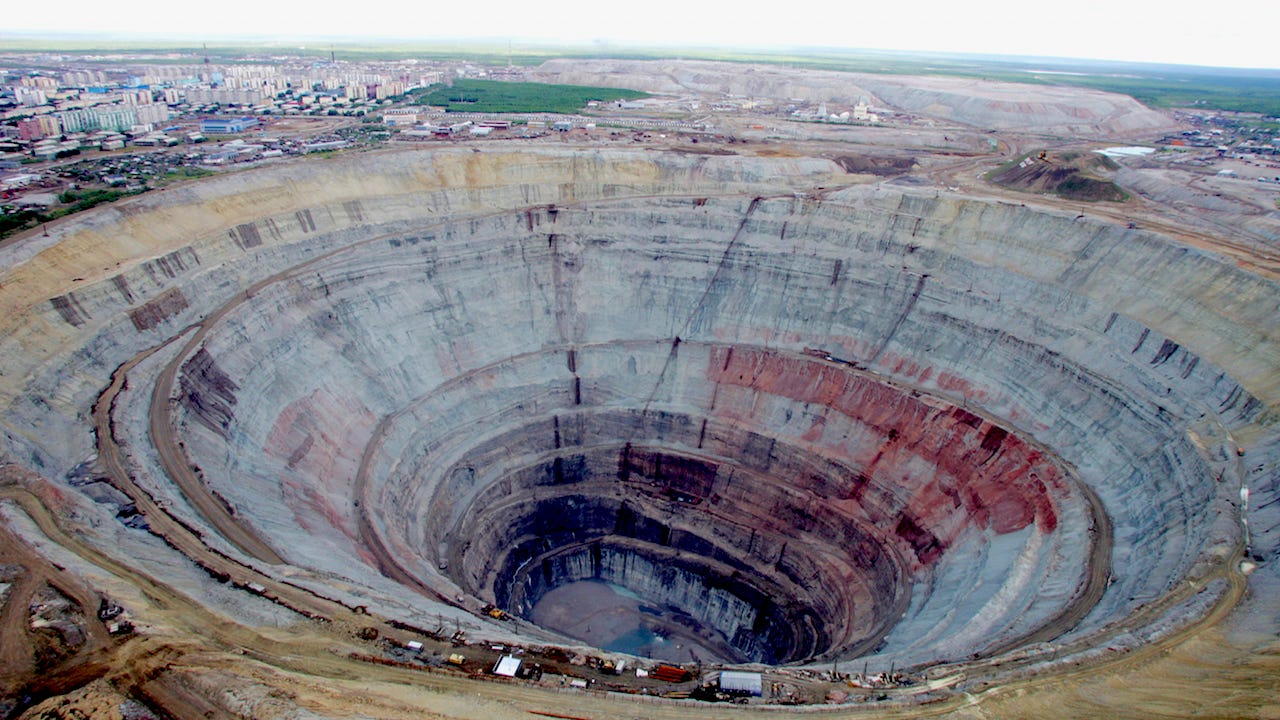
We can learn to live without any of these things. We did, for millennia. It's all about capitalism, the most destructive force on the planet. And if we can't, we, the human race, should go extinct. We are not needed.
So: Not in my backyard, not in anyone's. Because here's the truth that people don't want to face: It's all OUR backyard.
Thank You Gavin for the terrifying photos.... That tragedy has even deeper rabbit hole:
https://www.techradar.com/pro/a-massive-wyoming-data-center-will-soon-use-5x-more-power-than-the-states-human-occupants-and-no-one-knows-who-is-using-it
the technology is not even for us HUMANS!!!